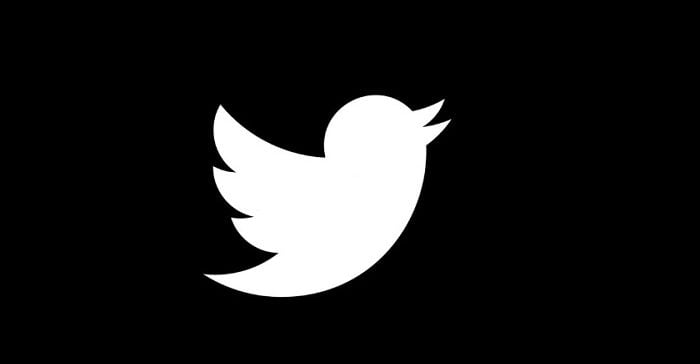Social Media
Twitter Culls Around 50% of its Staff as Part of Elon Musk’s Reformation Plan
- By Brett Belau
05 Nov

Elon Musk has held true to his word on staff cuts at Twitter, with the company eliminating, reportedly, around 50% of its entire workforce, as it works to rationalize the business.
The Twitter transition team informed staff that they would receive an email today that would let them know whether they still have a job or not. And while there are no official numbers as yet, internal managers have pegged the cull at around 50% of staff, with many long-serving experienced Tweeps bidding farewell via tweet.
Musk had repeatedly highlighted the potential of job cuts in his presentations to potential investment partners, as he sought funding for his Twitter acquisition. One document that he showed to potential investors back in May noted that Musk would look cut around 1,000 staff on day one of his takeover at the app, while Musk’s friend Jason Calacanis, who’s working with Musk on the transition, had also suggested that they should look to cut roles on day one, using the eloquent description ‘Sharpen your blades boys’ to signal the staff reductions.
More recent reports had suggested that Musk would be looking to cut 75% of Twitter’s 7,500 workers, reducing the business to a skeleton crew of just over 2,000 to keep things running. Musk later denied this figure, claiming that it didn’t come from him – though today’s action is seemingly not so far off from that target.
In Musk’s original investor presentations, Musk did also note that Twitter would eventually look to bring in more staff once again, adding back over 2,700 employees by 2025, in line with platform growth.
Whether that happens or not, we obviously can’t know, but on balance, today’s cuts seems pretty much in line with his stated plan.
Which, of course, does nothing to soften the blow for the thousands of people now left jobless as a result of the shift.
News of the coming staff cull first broke at around 8pm ET Wednesday, with leaked internal conversations and notes suggesting that Twitter’s transition management team would be looking to cut around half of the company’s 7,500 roles in order to reduce costs, as part of a broader effort to return the company to profitability.
Over the next two days, various reports suggested that significant moves were indeed in progress, with Twitter executives going dark in the company’s Slack channels, and some even (reportedly) being escorted out of the building by security.
In light of the pending news, Twitter also canceled its upcoming Chirp developer conference, which had been scheduled for November 16th.
It’s a sad day for the app, especially for staff that have been busting their asses this week in a bid to impress their new owner, in the hopes of saving their jobs. Clearly, there’s not much they could have done, and for many, that also means that they’re leaving roles they’ve been passionate about for many years, as they’ve worked to keep Twitter on the right track.
It’s also not great news for those that are left, who will now be under more pressure, with fewer resources, to keep up with Musk’s reformation plans. On a related note, the Musk transition team has also called on the company to reduce infrastructure costs by $1 billion per year.
In other Musk transition news, Twitter’s also shutting down its newsletter offering, which incorporated Revue, the newsletter platform that it acquired last year, while it’s also shelving its Notes experiment, which enabled users to attack longer text elements to tweets.
Musk has hinted that he is open to facilitating long-form content options in the app, but obviously, not in these formats – though I suspect that newsletters will return at some stage as Twitter continues to revamp its subscription tools.
But it’s hard to see how any of these things will get done any time soon, with so many people leaving the company. Musk, however, seems confident that Twitter will continue on as normal, despite the cull – which either means that Twitter has been carrying a lot of dead weight, or Elon is underestimating the scale of work required to keep things running.
Seems we’ll find out, as we move into the next stage for the app.
Source: www.socialmediatoday.com, originally published on 2022-11-04 13:07:54
Connect with B2 Web Studios
Get B2 news, tips and the latest trends on web, mobile and digital marketing
- Appleton/Green Bay (HQ): (920) 358-0305
- Las Vegas, NV (Satellite): (702) 659-7809
- Email Us: [email protected]

© Copyright 2002 – 2022 B2 Web Studios, a division of B2 Computing LLC. All rights reserved. All logos trademarks of their respective owners. Privacy Policy

![How to Successfully Use Social Media: A Small Business Guide for Beginners [Infographic]](https://b2webstudios.com/storage/2023/02/How-to-Successfully-Use-Social-Media-A-Small-Business-Guide-85x70.jpg)



![How to Successfully Use Social Media: A Small Business Guide for Beginners [Infographic]](https://b2webstudios.com/storage/2023/02/How-to-Successfully-Use-Social-Media-A-Small-Business-Guide-300x169.jpg)


Recent Comments